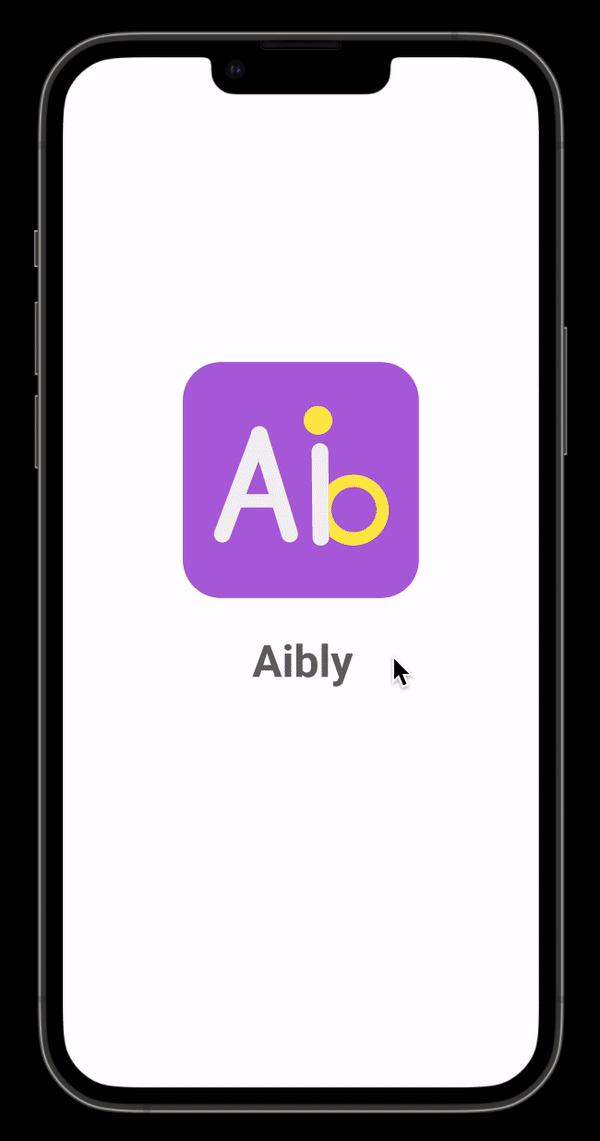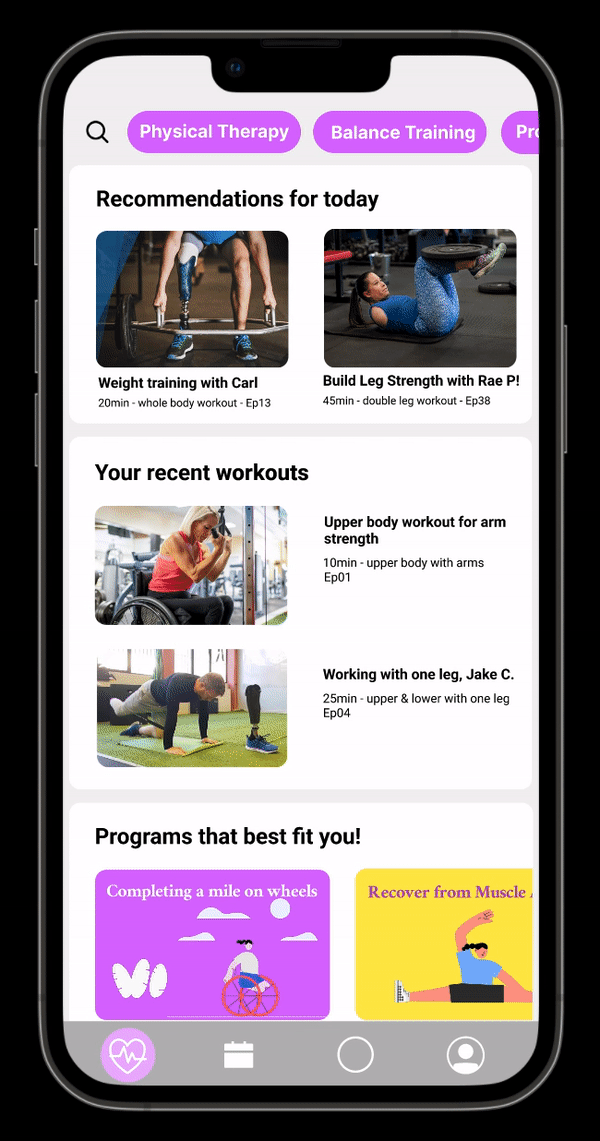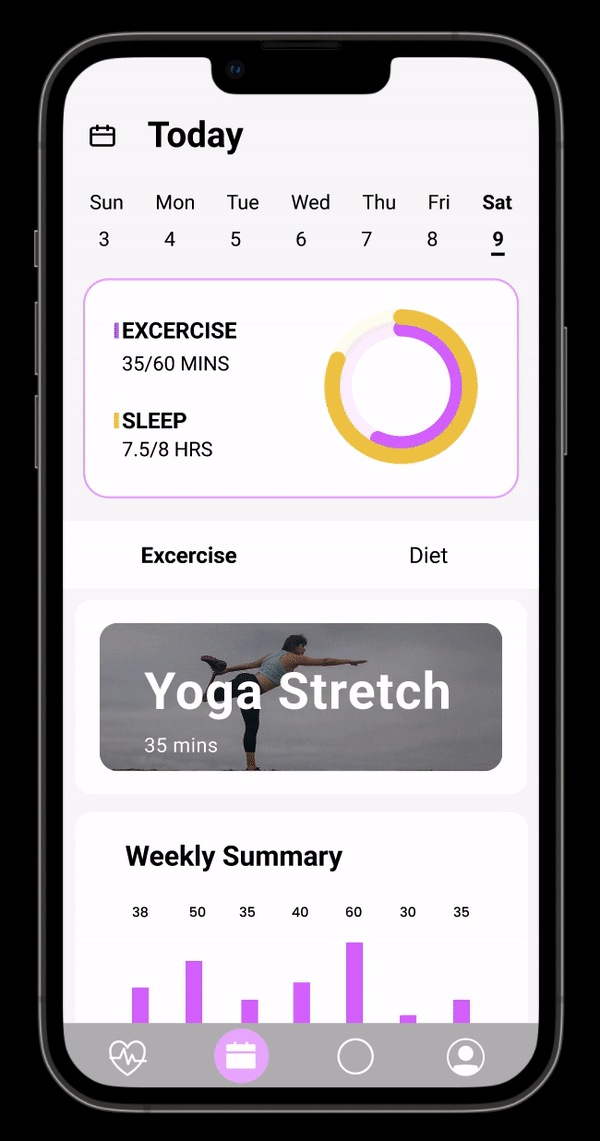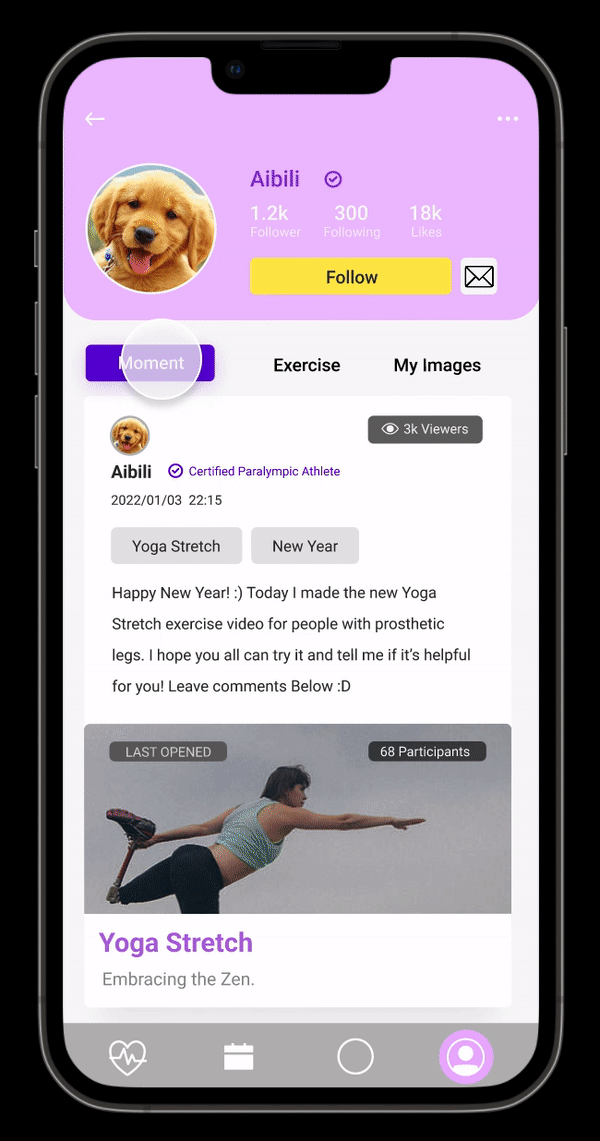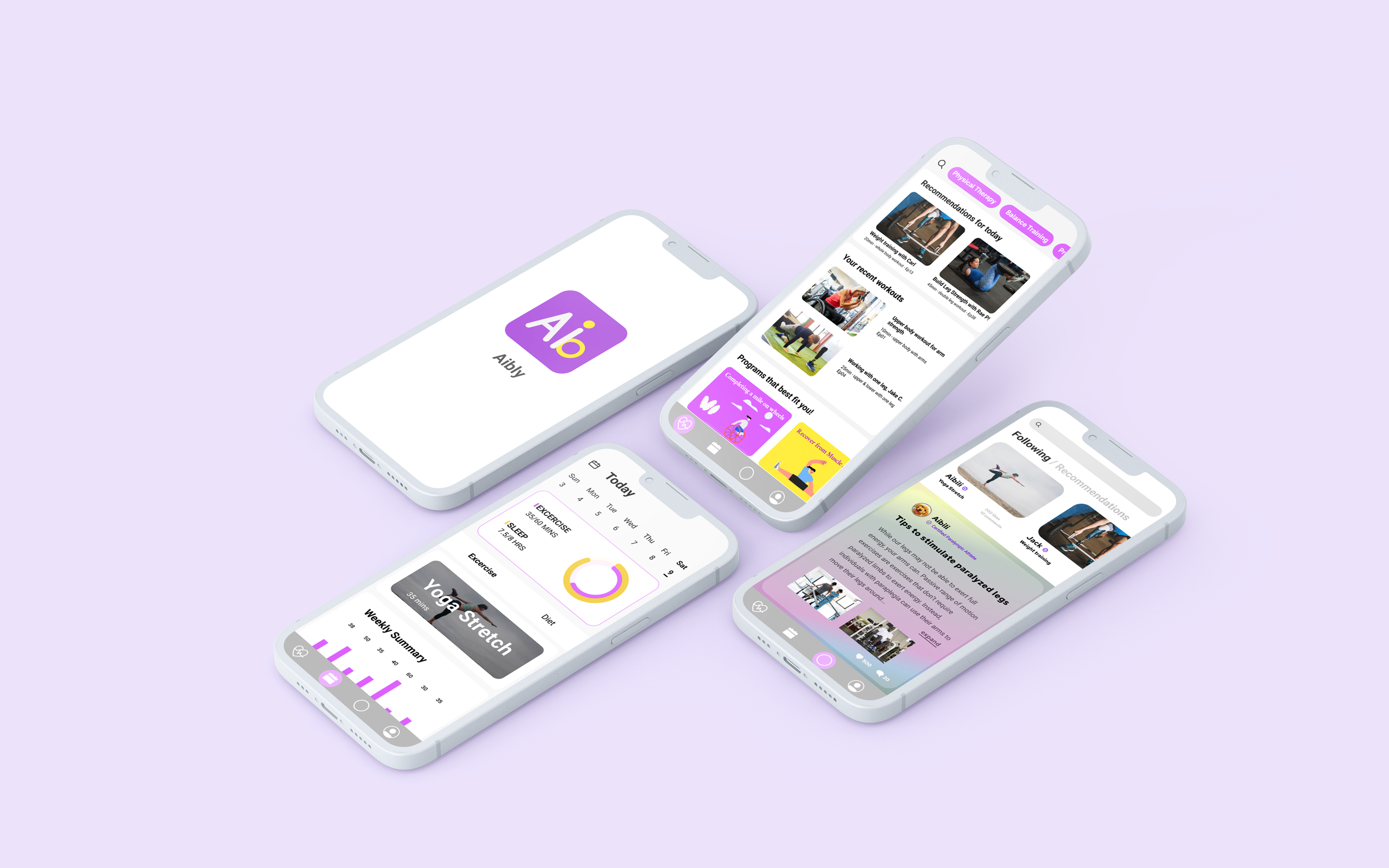
Aibly
First Place @ 2022 Wellesley Designathon
Personal fitness app for people with disabilities.
-
Role & Team
The product designer in a team of 3, with Emilie Zhang and Shellie Hu
-
Timeline
April 16 - 17, 2022
-
Tools
Figma
Overview
Wellesley in Product’s Designathon, EMPOWER, challenges participants to design a product that empowers people to embrace their authentic selves. We focused on the issue of inclusion and designed a fitness app for people with disabilities, which won the 1st place among 15 teams.
Our Key Goals:
Provide personalized fitness and recovery resources for people with reduced mobility.
Bring the communities together through sharing.
Celebrate physical progress and individuals’ unique bodies.
A Survey of Empowerment
From the very beginning, we seek to empower people with disabilities by:
Focusing on what they are able to do instead of what they have lost.
Not asking for weight and height like most fitness apps do because of the special circumstances of our users.
Personalized Fitness and Recovery Resources
The categories of fitness programs are tailored to the specific needs of the user community, such as physical therapy, balance training, and prosthetic usage:
Personalized recommendations based on initial survey.
Featuring most recent workouts.
Location based recommendation of physical therapist and certified physicians.
Personal Tracker
Daily and weekly summary session features inclusive language to maintain continuous motivation for users:
View how close they are to completing goals on any given day.
Use minutes to measure fitness goals instead of calories/ steps to be as inclusive as possible.
Featuring exercise done on the day, and a place to record user’s diet.
Connecting within the Community
Aibily is also a place where the community thrives together. Users can post their successes, offer tips specific to our users’ needs, as well as post questions in the community section:
Recommended profiles and the channels user follows will appear at the very top along with their posts.
Only certified channels will have the special icon to differentiate between posts about professional medical advice and general tips.
Celebrate Individual Achievement
User profile features a collection of their past exercise and posts, a space to celebrate how far they’ve came through:
Access to their moments, a culmination of their exercise hours, and a collection of posted images
View their physical progress and be proud of their own body.
Message friends in the community.
Design Process
Market Research
We first brainstormed our target users and the potential problem statement of the app, where we found that the fitness resources for people with disabilities are astonishingly limited. All the fitness apps are built for able-bodied people, completely excluding this community.
According to our research from the CDC, the most common disability is the disability related to physical mobility. That's why we decided to make a fitness app for people with physical mobility disabilities.
Preliminary Design Sketches
We ideated the design while creating low-fidelity mockups. Our design has a great emphasize on empowerment to the community of users with reduced mobility, from start to end of the user experience.
After user first signed up, the questionnaire asks users what they are able to do instead of what they have lost. we do not ask the user "what disability do you have”, but rather "what kind of exercise are you able to do" in order to emphasize what they can do instead of what they have lost. Furthermore, we chose to phrase the recommended gyms as "accessible gyms" instead of "disabled-friendly gyms" to keep from equating their identities to their disabilities. We also conducted intensive research on what fitness exercises people with disabilities need most.
High-Fidelity Design

